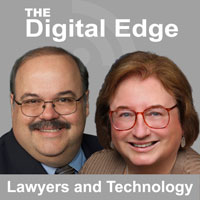Article
Video and Audio Deepfakes: What Lawyers Need to Know
September 21, 2020
If some nefarious person has decent photos of your face, you too (like so many unfortunate Hollywood celebrities) could appear to be the star of a pornographic video. If someone has recordings of your voice (from your website videos, CLEs you have presented, speeches you’ve given, etc.), they can do a remarkably good job of simulating your spoken words and, just as an example, call your office manager and authorize a wire transfer – something the office manager may be willing to do because of “recognizing” your voice.
Unnerving? Yes, but it is the reality of today. And if you don’t believe how “white hot” deepfakes are, just put a Google alert on that word and you’ll be amazed at the volume of daily results.
Political and Legal Implications
We have already seen deepfakes used in the political area (the “drunk” Nancy Pelosi deepfake, a reference to which was tweeted by the president), and many commentators worry that deepfake videos will ramp up for the 2020 election. Some of them, including the Pelosi video, are referred to as “cheapfakes” because they are so poorly done (basically running the video at 75 percent speed to simulate drunkenness), but that really doesn’t matter if large numbers of voters believe it’s real. And the days when you could tell a deepfake video by the fact that the person didn’t blink are rapidly vanishing as the algorithms have gotten smarter.
In August 2019, the Democratic National Committee wanted to demonstrate the potential threat to the 2020 election posed by deepfake videos so it showed, at the 2019 Def Con conference, a video of DNC Chair Tom Perez. The audience was told he was unable to come but would appear via Skype. Perez came on screen and apologized for not being in attendance—except that he had said no such thing. It was a deepfake.

